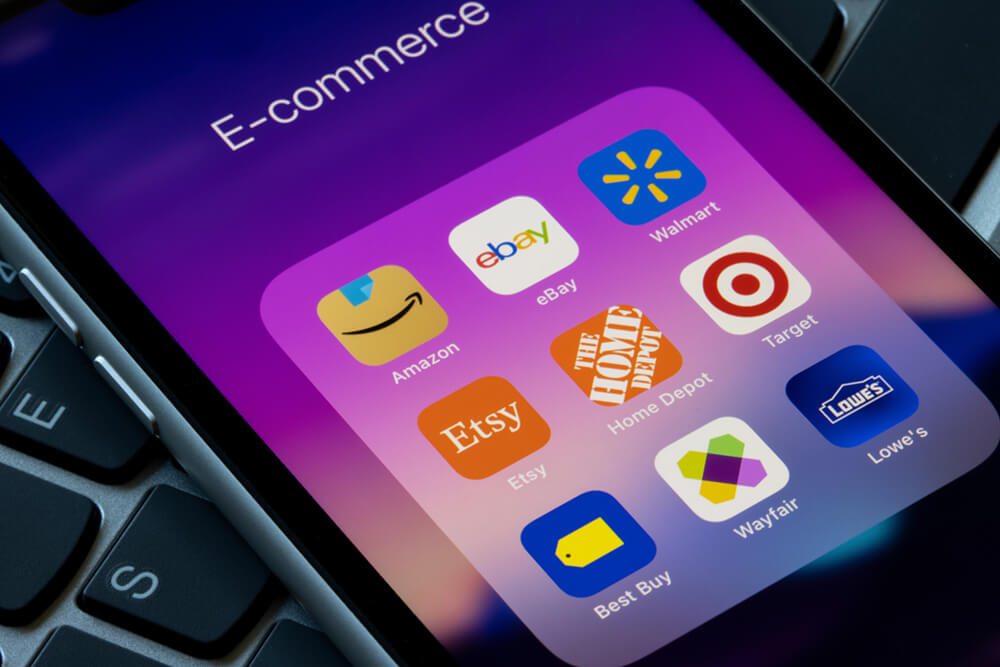
As the number of online marketplaces increases, are there any real eBay alternatives? The obvious one is Amazon, and many merchants on eBay also sell on Amazon, but beyond these two, what then? Let’s take a look at the stats of sales on online marketplaces other than these big two and see what, if any, viable eBay alternatives there are:
eBay Alternatives Comparison Table
| Site | Third Party Merchandise Value | Country | Category |
| eBay | 73.9 billion US$ | Global | General |
| Walmart | 33 billion US$ | US | General |
| Houzz | 14 billion US$ | US | Home Décor and DIY |
| Etsy | 11.8 billion US$ | Global | Arts, Crafts, Vintage |
| OnBuy | 229 million US$ | UK | General |
| Bonanza | 185 million US$ | US | General |
| Newegg | Not disclosed | US | General but mostly tech |
Stats from Statista and others.
Any other alternatives to eBay?
There are a large number of other possible sites, but their traffic and sales figures mean that they’re not a viable alternative, similar to Bonanza and OnBuy above.
Amazon
Amazon, as always, is a viable eBay alternative but remains fiercely competitive and has higher barriers to entry, requiring special approval to sell many brands and in many categories. Their fees are also higher than eBays, and it can be challenging to gain traction without spending a considerable amount on Amazon advertising.
If you have products with your own brand, these can be very successful on Amazon as you won’t have the same level of competition. Find out how we can help you start selling on Amazon with your branding.
Walmart
Walmart has been growing as a third party marketplace but still trails well behind eBay with less than half the sales value for third party vendors. In addition, it’s not easy to get approved as a seller on Walmart, they have strict requirements, and you must have prior evidence of ecommerce success. If you have very successfully sold on Amazon and eBay, this counts in your favour. Walmart doesn’t enforce an exact size of business or volume of sales, but we have seen it recommended to have sales of at least several hundreds of thousands a year on other platforms before applying!
You must also provide a manned customer service phone number that covers at least 12 hours daily (because of different time zones).
Etsy
One promising possibility is Etsy; however, only if your products fall within the confines of their categories. Etsy, in particular, is only for handmade goods; sellers are not allowed to sell items that were not made or, at the very least, designed by them. The only exceptions to this rule are for vintage items and craft supplies; the latter can be mass produced items.
If you create your own goods, particularly for “gift” type products, it can be a good marketplace, but it can be hard to get visibility due to saturation with these kinds of products.
Houzz
Similarly to Etsy, Houzz is a possibility if your products fall into the categories they cover, primarily home décor. There is also a lengthy approval process to go through first.
OnBuy
OnBuy is currently UK only, although they do accept international sellers. However, they have been growing for several years, and it looks like they will continue. For now, though, their sales at $229 million are still a tiny fraction of eBay UK’s at $1.91 billion.
EBay sellers that have also put their products on OnBuy report small numbers of sales, really just an “extra” to their eBay sales, and nowhere near an eBay alternative, at least for now.
There is also no real way to differentiate your offer from any other sellers; you can’t have your own design for your listings.
Bonanza
Bonanza charges nothing for listing items there and has low selling fees, 3.5% or 9%, if you want to include submission of your products to Google Shopping. It’s worth bearing in mind that eBay does this with no extra charge.
Also, Bonanza’s sales are tiny compared to eBays, and many eBay sellers who have tried selling there have reported so few sales that it really wasn’t worth the time spent setting it up in the first place.
Newegg
Although Newegg does have other product categories, they remain primarily a tech marketplace. Additionally, they’re a bit of a dark horse as they don’t release GMV for third party sellers, so it’s hard to know whether it would be worth becoming a merchant on there. What we do know is that they get pretty bad Trustpilot reviews!
Facebook Marketplace
Several commentators mentioned Facebook Marketplace as another of the many eBay alternatives. In the past, it was mainly used as a local marketplace for individuals to sell items to others in their neighbourhood. They have introduced more functionality to allow different payment options, and businesses with their own Facebook Shop page can also put those across to the Marketplace. However, it’s still not fully set up as a business marketplace, and we couldn’t find data on its annual sales volume.
Summary
Reviewing these eBay alternatives, overall, eBay remains the largest marketplace with easy access for all sellers and lower fees than Amazon. Rather than looking to other, smaller marketplaces, we recommend boosting your chances of success on eBay by ensuring you have fully optimised all your eBay listings to gain the most visibility. You should also invest in a professional eBay template design to showcase your products and inspire buyer trust, and they can also allow you to cross-promote and upsell your products. You can find out about our professional eBay designs here.
The other alternative to eBay is to have your own ecommerce site. In fact, it need not be an alternative; you can have both! In times past, having your own site involved a large amount of upfront investment in getting a site built for you, but nowadays, it’s a simpler, cheaper process. Platforms such as BigCommerce and Shopify make it a lot faster and easier to get started, all you need is your own theme designed with your logos and branding, and you’re ready to go.
Click the links to find out about our custom BigCommerce and Shopify designs that will include your own colours, logos and branding.








